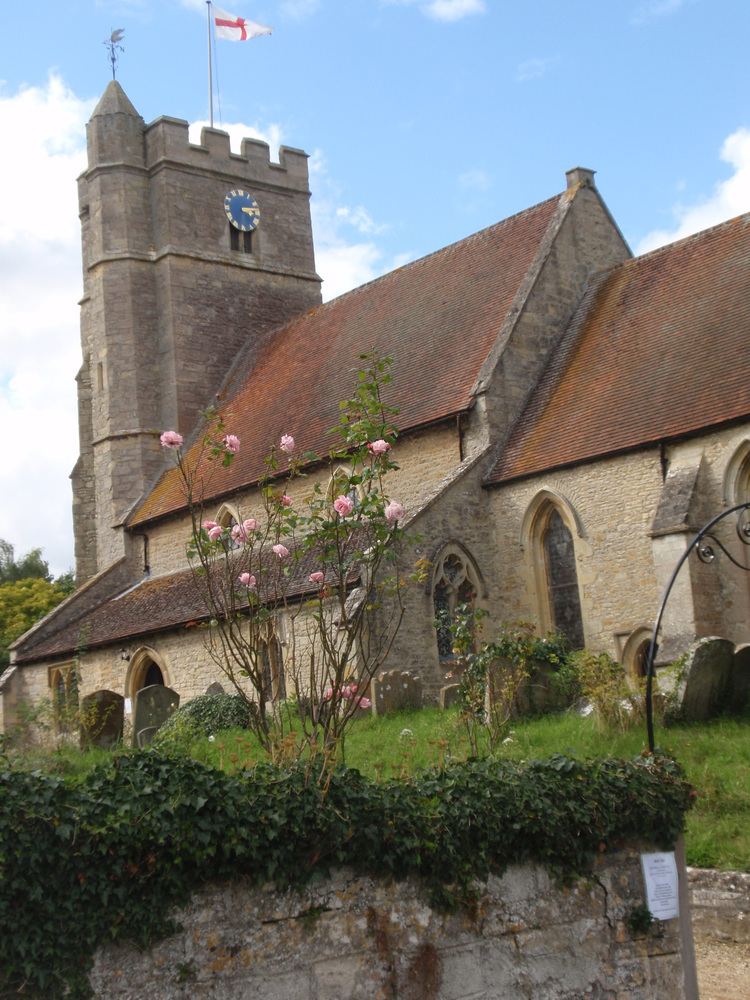Population 430 (2011 census) Civil parish Stanton St. John Country England Area 10.93 km² District South Oxfordshire UK parliament constituency Henley | OS grid reference SP5709 Region South East Sovereign state United Kingdom Shire county Oxfordshire Dialling code 01865 | |
 | ||
Stanton St. John is a village and civil parish in Oxfordshire about 4.5 miles (7 km) northeast of the centre of Oxford. The village is 330 feet (100 m) above sea level on the eastern brow of a group of hills northeast of Oxford, in a slight saddle between two of the hills.
Contents
- Map of Stanton St John UK
- Archaeology
- Manor
- Parish church
- Economic and social history
- Amenities
- References
Map of Stanton St. John, UK
Archaeology
The course of the former Roman road that linked Dorchester on Thames with Alchester passes through the western part of the parish. In 1953 excavations up to 300 yards (270 m) east of the parish church found evidence of Roman occupation.
Manor
The Domesday Book records that in 1086 William the Conqueror's half-brother Odo, Bishop of Bayeux held the manor of Stanton St. John and Ilbert de Lacy was his principal tenant. De Lacy also held the manor in the adjacent parish of Forest Hill, but in about 1100 de Lacy's son forfeited both manors.
After 1526 the manor of the village was granted to New College, Oxford.
Parish church
The Church of England parish church of Saint John the Baptist was built in the 12th century. The arcade between the nave and north aisle dates from this period and is in the Transitional style between Norman architecture and Early English Gothic. The chancel arch also is Transitional, but may have been rebuilt in about 1700. The chancel was rebuilt around the beginning of the 14th century and is a high quality example of the transition from Early English (its side windows) to the Decorated Gothic (its east widow, which has unusual tracery). The south aisle was built late in the 14th century, with a clerestory above its arcade to light the nave. In the 15th century all but one of the windows in the north aisle were replaced with Perpendicular Gothic ones and the bell tower was built. The church furniture includes four early 16th century benches whose bench ends have unusual carvings of poppyheads, human heads and grotesque animals.
The tower has a ring of five bells. Ellis and Francis Knight of Reading cast the treble and fourth bells in 1652. Michael Darbie, an itinerant bellfounder, cast the third bell in 1656. Henry III Bagley of Chacombe, Northamptonshire cast the second bell in 1716, possibly at his foundry at Witney. Abraham II Rudhall of Gloucester cast the tenor bell in 1724, completing the current ring.
Economic and social history
The village retains several 16th and 17th stone-built houses, including Manor Farm and John White's house. The Puritan minister John White (1575–1648) was born here. He was the vicar of Dorchester, Dorset, and was nicknamed the "Patriarch of Dorchester". White was instrumental in founding the New England colony of Massachusetts. A later John White ran Manor Farm on behalf of New College, and repaired the Manor Farm house in 1660.
During the English Civil War, Royalist troops were stationed in the village in 1643 and 1644 as part of the defence of Oxford against Parliamentarian forces to the east. In 1646 Parliamentarian troops occupied the village during the siege of Oxford.
An open field system of farming originally predominated in the parish. By 1706 a number of fields had been enclosed, but more than 400 acres (160 ha) of common land remained until they were enclosed by an Act of Parliament in 1777.
In 1717 Dame Elizabeth Holford left a bequest to be invested until it was large enough to endow a free school for the parish. Trustees to set up the school were appointed in 1759 and it started teaching in the vicarage in 1764. A school was built on land provided by New College and completed in 1767. In 1874 the schoolrooms were demolished and rebuilt to comply with the Education Act 1870. By the 1950s the school was a Church of England primary school. The school closed in 1984 and became the Holford Centre in 1989. It is now used by a pre-school and for other educational purposes.
Amenities
Stanton St. John has two public houses:
Stanton St John has a village shop and a Women's Institute.
